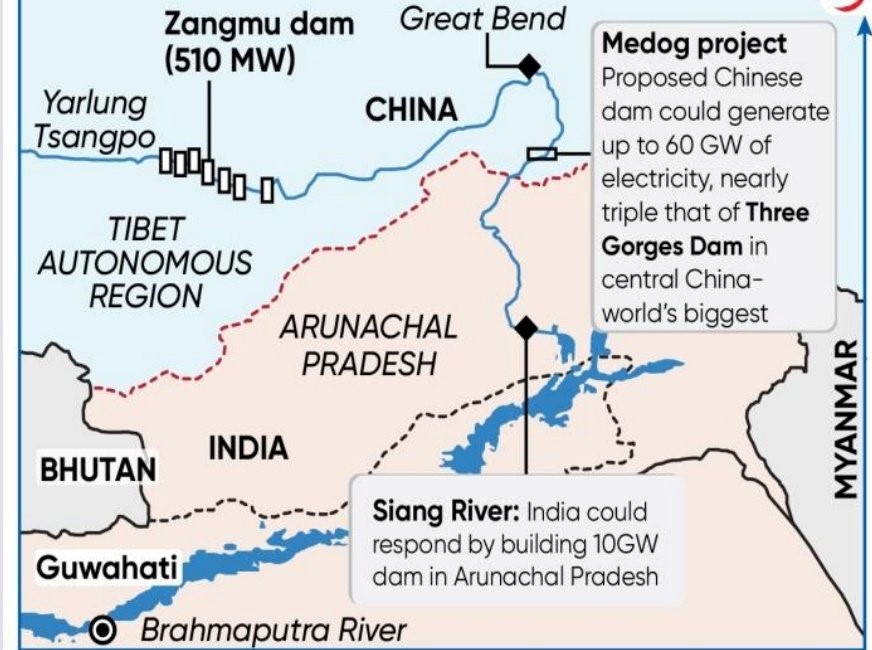Banking Current Affairs
| International Relations |
|---|
|
|
|
Source: PTI
Arunachal Pradesh Chief Minister Pema Khandu highlighted the importance of the Siang Upper Multipurpose Project (SUMP) as a strategic initiative by the Indian government to mitigate flood risks and maintain the natural flow of the river. Key Highlights: SUMP Details: Estimated cost: ₹1.13 lakh crore. Installed capacity: 11,000 MW. Objectives: Primary focus on preventing floods and maintaining the river's flow; electricity generation is secondary. China’s Dam Construction: China is constructing the world’s largest dam at a cost of $137 billion on the Brahmaputra River in Tibet, near the Indian border. The dam’s location is a gorge in the Himalayan region, where the river takes a U-turn to flow into Arunachal Pradesh and then into Bangladesh. Flood Mitigation: SUMP aims to protect downstream regions from potential flood risks caused by excess water releases from China. The project would ensure communities relying on the Siang River are safeguarded from drastic changes in water flow. Local Concerns: The project faces opposition from local communities over displacement, livelihood loss, and environmental impacts. Pre-feasibility surveys for the project are yet to be completed. Strategic Importance: The project is considered critical for national security and disaster management. India views SUMP as a counter to China’s plans of diverting the Brahmaputra River’s water to its arid regions, which could significantly reduce the Siang River’s flow during winters. |
|
|
|
About Siang River:
The Tsangpo, which originates in China, is called the Siang after it enters India through the Upper Siang district in the northeastern state. The Siang joins two other rivers – the Lohit and the Dibang – downstream to form the Brahmaputra. 
|
| >> More Banking Current Affairs |
